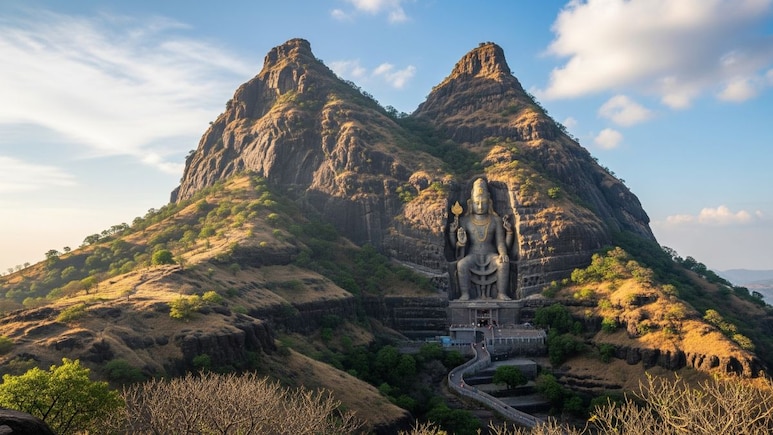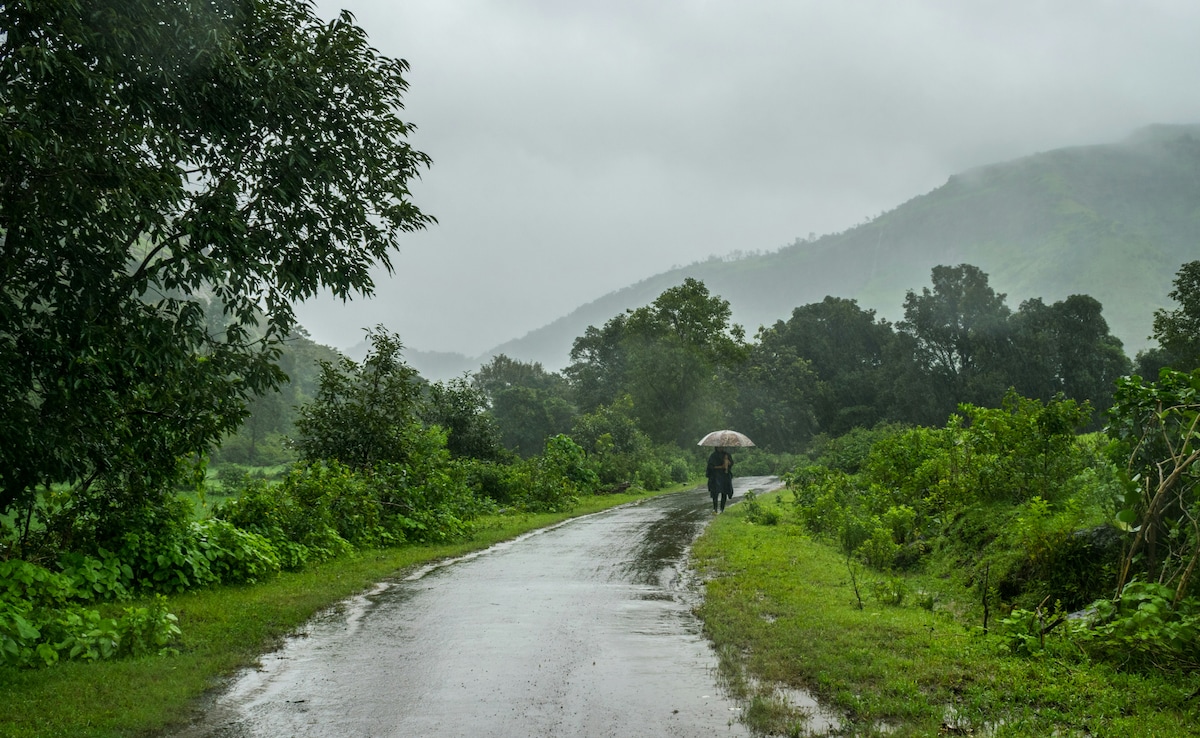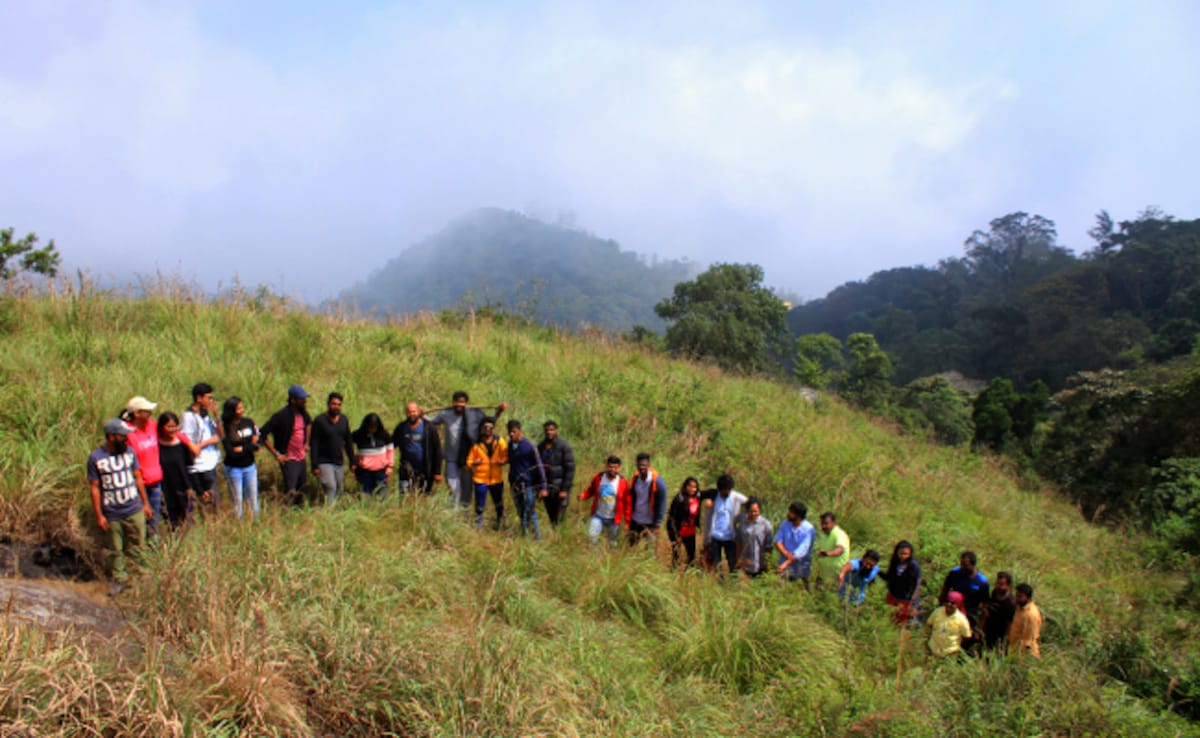
- Mangi Tungi is a Jain pilgrimage site in Nashik district with over 4,000 stone steps
- The site features the 108-foot Statue of Ahimsa, the tallest Jain idol from a single rock
- Best time to visit is November to February; climb takes 3 to 5 hours including breaks
There is a certain thrill in planning a trip that is part pilgrimage, part stair-master. That is Mangi Tungi for you. Picture two jagged rock spires rising from the Sahyadris, a long stone staircase snaking up the slope, caves punched into the cliffs, and a 108-foot monolithic Jain statue gazing over the countryside. It is dramatic without trying to be, and it feels like a proper journey, not just a photo stop. Even Maharashtra Tourism calls it the "Great Wall of Maharashtra" thanks to those endless steps and ridge views.
Also Read: Now Reaching Mumbai Airport Terminal 2 From Metro Is Just A 100-Metre Walk
Where Is Mangi Tungi?
Mangi Tungi sits in Satana taluka of Nashik district, about 125 kilometres from Nashik city. The site comprises twin peaks - Mangi to the west and Tungi to the east - connected by a narrow saddle. To reach the top, you must climb a stone staircase with over 4,000 steps. The route is dotted with caves, shrines and resting spots, making the ascent both spiritual and scenic.
Why People Visit Mangi Tungi?
Faith comes first. Mangi Tungi is a revered Jain pilgrimage site, home to ancient caves and shrines spread across both hills. The Nashik district administration lists it as a "famous holy place for pilgrimage".
The showstopper here is the Statue of Ahimsa - a 108-foot monolithic idol of Lord Rishabhdev (Adinath), the first Jain Tirthankara. Completed in 2016, it holds the Guinness World Record for the tallest Jain idol carved from a single rock. In 2018, the President of India inaugurated the Vishwashanti Ahimsa Sammelan at the site, underlining its national significance.

Photo Credit: iStock
What To Expect?
Brace yourself for a staircase of over 4,000 steps. The climb is steady, with broad steps, shaded resting points and clusters of caves carved into the cliffs. You will pass small shrines and inscriptions as you ascend. The first hour is best taken slow = sip water, set your pace and enjoy the unfolding views.
In winter, the air is crisp, and visibility is excellent. During monsoon, the hills turn lush green, but the steps can get slippery. Facilities at the base include parking, water stations and basic connectivity, upgraded around the 2016 consecration.
Safety tip: Avoid stepping onto fence walls or peeking over cliff edges, especially in wet weather. Local reports have covered accidents due to slippery conditions.
Best Time To Visit And Duration:
The ideal window is between November and February, when the weather is cool and dry. If you enjoy monsoon treks, aim for late August or early September when the steps are less slick than peak rains.
Start early, during sunrise if possible. Most reasonably fit visitors complete the round trip in 3 to 5 hours, including photo breaks and temple visits.
What To See On The Way Up?
The journey is more about slow discovery than one grand monument. You will pass clusters of rock-cut caves, each housing small shrines and idols of Jain Tirthankaras. The top zones around the saddle and on Tungi hill feature the Statue of Ahimsa complex, which can get crowded on festival days.
Look out for inscriptions, ancient carvings and panoramic views of the Sahyadri range. The spiritual energy of the place is palpable, especially in the quiet corners of the caves.
How To Get There?
Drive to Satana, then onward to Tahrabad, the base village for Mangi Tungi. Public transport options thin out after Satana, so a hired cab or self-drive is the most reliable choice.
Quick tip: If you are travelling from Mumbai or Pune, plan for a 6-8-hour drive. Shared taxis and local buses are available from Nashik to Satana, but may not run frequently to the base.
Also Read: Mumbai-Ahmedabad Bullet Train To Cut Travel Time To 2 Hours: Railway Minister

Photo Credit: iStock
Travel Tips To Remember:
This is a living pilgrimage site, not just a trekking destination. So,
- Dress modestly and avoid loud behaviour
- Refrain from carrying leather goods inside temple areas
- Carry cash for small offerings or snacks
- Respect local customs and keep noise to a minimum
Essentials To Pack:
- Water bottle
- Comfortable walking shoes
- Cap or scarf
- Light snacks
- Patience and a sense of reverence
Final Thought
Mangi Tungi is more like a journey through devotion, endurance and awe. Whether you go for the spiritual pull, the panoramic views or the sheer challenge of 4,000 steps, the experience stays with you. The twin peaks, the caves, and that towering idol together create a space that is both humbling and uplifting.
Would you climb the Great Wall of Maharashtra? Tell us in the comments, or share your experience if you already have.
Track Latest News Live on NDTV.com and get news updates from India and around the world

